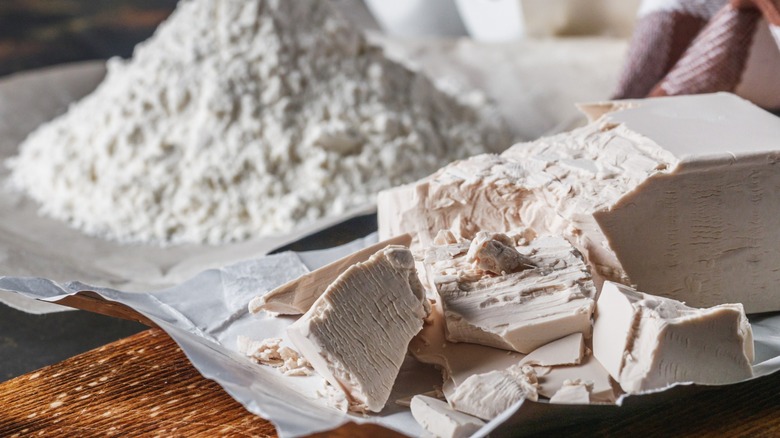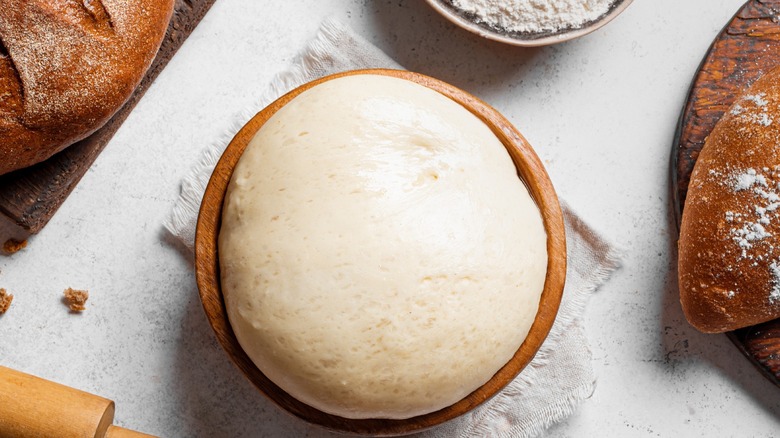Does Fresh Yeast Make A Difference In Baking?
Everyone's made their share of mistakes you shouldn't make when making bread, but once you get the hang of it, it's something you can do almost any time you're in the mood. For many, it becomes an easy, relaxing process. And it only requires a handful of ingredients, most of which are pantry staples. But the thing that sets bread apart from other baked goods is yeast.
Yeast is a living organism that eats sugars, turning them into carbon dioxide gas and alcohol. That process, called "fermentation," adds flavor to bread and helps the baked goods rise. There are two main types of yeast: dried yeast, which is a dormant version that comes in a small packet you can store in your pantry, and fresh yeast, which you must refrigerate because it's active.
You use fresh yeast the same way you use instant dry yeast, but you must crumble it into the bowl. Fresh yeast is also more active, so you need about a third as much. And it does make a difference. Some say using fresh yeast upgrades your basic white bread because it has a less "yeasty" flavor and a bigger, better rise. However, the differences are minimal, making others wonder if it's worth it for the extra hassle.
Is fresh yeast worth it to you?
Fresh yeast produces a slightly less characteristically yeasty flavor than dry yeast. When yeast is dried, some of those yeast cells die – about 25%. That ultimately slows down the yeast's fermentation rate, which creates buildup and that yeasty flavor you may associate with bread. Fresh yeast has fewer dead cells, so the tangy yeast flavor isn't as noticeable. Dry yeast's slower fermentation rate also creates a longer rise time. Fresh yeast rises bigger and quicker than dried yeast,.
That said, the differences between fresh and dry yeast are minimal, and fresh yeast has more rigorous storage needs and a shorter shelf life (two or three weeks) than its dry cousin (which lasts for up to two years). For those reasons, if you're new to baking with yeast, it's not a bad idea to start with the more accessible dry yeast and transition to fresh yeast if you find you use it often enough. But if you aren't planning to make bread too often, it isn't worth buying fresh yeast because it could go to waste.

